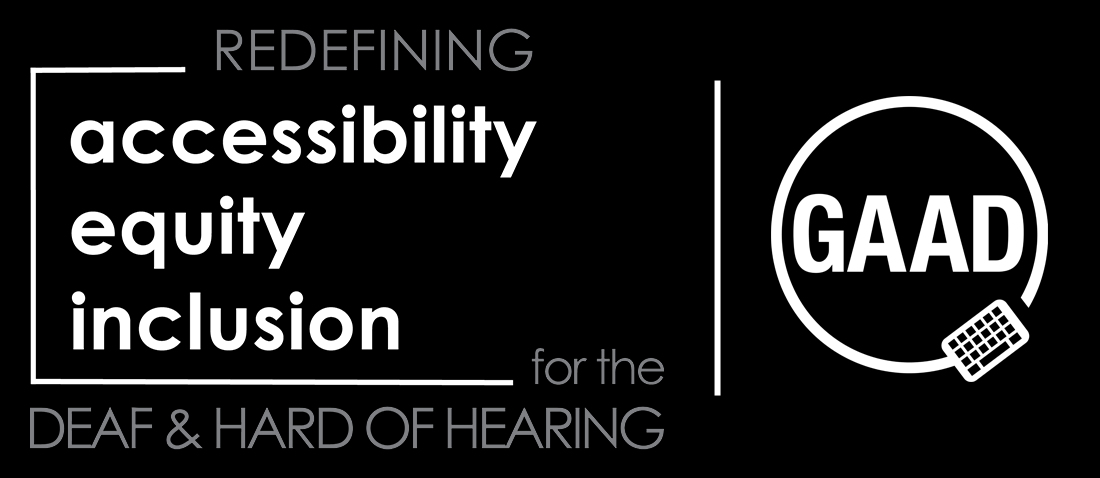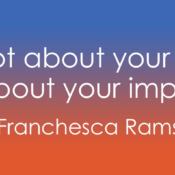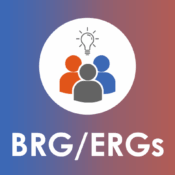
It’s Not Just Inclusion If It’s Not Accessible: Reframing Equity Through a Deaf Lens
At 2axend, our core mission revolves around creating a fundamental shift in how accessibility, equity, and inclusion are perceived and implemented for the Deaf and hard of hearing community. This commitment extends beyond mere compliance, as we aim to help our partners dismantle existing barriers and cultivate environments where communication is truly seamless. We’re committed to playing our part in building an equitable world - where all members of our community have the opportunity to participate and thrive in society.
That said, today marks the 14th Global Accessibility Awareness Day (GAAD). In honor of the GAAD mission, centered on “digital access and inclusion,” I feel compelled to remind my readers that far too often accessibility is tacked on as a footnote or an afterthought. Proactive accessibility simply isn’t the reality. Accessibility remains the final element added only after the planning, budget, and decisions are already finalized. Members of the Deaf and hard of hearing community know accessibility deserves more than this “checkbox” status. Accessibility must be a part of the foundation and an inherent part of our collective consciousness and practice.
It’s time we stop talking about equity without centering accessibility. Let’s stop pretending equity exists if systemic, physical, and attitudinal barriers are still evident every step of the journey for Deaf, DeafBlind and hard of hearing individuals.
Accessibility Is Not a Technical Fix—It’s a Cultural Revolution
For Deaf and hard of hearing individuals, accessibility is not only about whether there are interpreters or captions. It’s rooted in the way entire environments are designed with access in mind. This conversation isn’t about “accommodations” - we must forge a way to belong from the very beginning.
Accessibility deserves a revolution - reframed as a cultural expectation, not a logistical afterthought.
When accessibility is considered late in the design or development process, it often becomes a series of fixes and adjustments to accommodate ad hoc needs. Ironically, this approach is often more expensive, less elegant, and can result in a subpar experience for all individuals - not just the affected.
The Three Dimensions of Inaccessibility
In partnering with organizations to improve the user experience for Deaf and hard of hearing individuals, I have uncovered three fundamental dimensions of inaccessibility. Even organizations who lead in accessibility and inclusion have proven to struggle with the following barriers to access:
1. Attitudinal Barriers
Attitudinal barriers are the most persistent roadblock and are deeply impactful. These flawed mindsets and microaggressions go beyond stating mere inconveniences and strike at the core of equity. Deaf, DeafBlind, and hard of hearing individuals participation is often minimized, as evidenced by common quotes featured in our #TheDDBHHTax campaign:
- “We forgot to submit your request for an interpreter… we’ll catch you up later.”
- “It’s too expensive to provide captions/interpreters.”
- “It’s amazing how much you can achieve despite your deafness.”
- “I’ll tell you later, it’s not that important.”
- “We’re not going to get an interpreter… It’s alright if you don’t join us.”
These seemingly innocuous comments communicate clearly to a Deaf, DeafBlind or hard of hearing individual that they are not a priority and are considered a burden.
Unconscious biases are the root of many accessibility barriers, reflecting a lack of empathy, understanding, and a fundamental disregard for basic communication needs and rights.
Equity begins when we replace biased attitudes with accountability and creativity.
This is exactly why 2axend provides mindful, high-impact training centered in real-world situations. Our team of Deaf and hard of hearing individuals leverage their unique Deaf lens and subject-matter expertise to equip our learners with effective accessibility and inclusion strategies to lead with empathy and deliver impact.
2. Physical and Sensory Barriers
On a daily basis, Deaf people - including myself - navigate inaccessible environments where alarms have no visual signals, announcements are audio-based, and meeting rooms lack visual access points. These flaws are not just inconveniences - they’re systemic exclusions and potential safety risks.
Physical accessibility must be designed with the Deaf experience in mind - lighting, line of sight, visual cues, and sound management in physical environments do matter.
Unfortunately, many well-intentioned organizations are unaware of the extent in which their environment creates systemic exclusions for Deaf individuals. More so, they may lack the specific knowledge and strategies to effectively address these issues.
In my experience, most organizations experience the common phenomena I like to call “unintentional oversight.”
Many organizations haven't consciously considered the Deaf experience in their physical space design and operational procedures. Their focus might have been primarily on traditional physical-related accommodations (e.g., ramps, elevators) rather than communication-related accommodations.
Ironically, a number of physical-related accommodations are integrated within the initial design of buildings and spaces. The correlated expenses have been incurred and cannot be recovered. These sunk costs do not affect future financial decisions as they have already been spent. Consequently, these types of accommodations are not often listed as an annual line item on a yearly basis.
With respect to Deaf and hard of hearing individuals who generally request communication-related accommodations, this standard leaves organizations dealing with ad hoc, urgent requests for accommodations. The frustrations these individuals encounter are often a byproduct of process inefficiencies or a lack of an allocated budgeted amount and result in challenges for all involved.
Notably, organizations who lead in accessibility often deploy the “two-senses principle” - ensuring information is always presented in at least two different sensory approaches so it can be perceived by a wider audience. This approach prevents unintentional oversight where access is provided to only one form of cues (e.g., visual or auditory cues). While this is a great first step in ensuring accessibility, limiting to two form of cues may unintentionally exclude DeafBlind individuals who may need further sensory outputs, including touch.
This only illustrates the need to be inclusive of as wide of a target audience as possible during the development of products and services, as overlooking any segment can lead to unmet needs and missed opportunities.
3. Systemic Barriers
Access shouldn’t depend on who’s asking loudest or who knows how to advocate. Interpreting services, captioning, and Deaf and hard of hearing perspectives must be baked into the system - not granted by exception.
Policies must assume the presence of Deaf and hard of hearing participants, not treat them as an exception.
It’s worth noting that accessibility often becomes a siloed responsibility of a specific team or individual. Rather than being integrated at the beginning of product creation and service delivery, it is often left to a single key stakeholder who is left to “wrangle cats” and hunt down any signs of inequity. Accessibility is far too big a burden for one person or team to carry alone, and must be integrated into the mindset and workflow of everyone involved in the process along the way.
The common perception of accessibility as a “compliance-driven burden” leads to a minimalist approach where organizations focus only on meeting basic requirements rather than creating exceptional experiences for all.
Inclusion Without Accessibility Is Just Optics
With that said - too many “inclusive” spaces are still functionally inaccessible. Inviting Deaf, DeafBlind and hard of hearing individuals into a space where they can’t fully participate is not inclusion - it’s performance. In essence, having an ASL interpreter present during a meeting that is not captioned is simply missing the mark.
Real inclusion starts here:
- Were Deaf stakeholders involved in the planning process?
- Are resources going to language access infrastructure, not just PR?
- Are Deaf perspectives centered in decision-making—not just consulted as tokens?
Equity Means Shared Power, Not Just Shared Space
Accessibility is the tool. Inclusion is the goal. But equity is the measurement: Who has power, voice, and influence?
Deaf and hard of hearing people shouldn’t just be present at the table - they should be shaping the table, the menu, and the guest list. Equity begins at:
- Investing in Deaf leadership
- Normalizing Deaf-led training and consulting
- Ensuring feedback loops actually change outcomes
Accessibility Is Everyone’s Responsibility
You don’t need to be an accessibility expert to start shifting your practices. You just need to ask:
“Who might this exclude – and what would it take to make it truly accessible?”
After all, if a space isn’t accessible - it isn’t equitable. If it isn’t equitable - it isn’t inclusive… No matter how diverse the photos on your website may appear. It’s time to stop treating accessibility as a checklist. Equity only begins where access is honored, not negotiated.
Start treating accessibility as a core value today.



